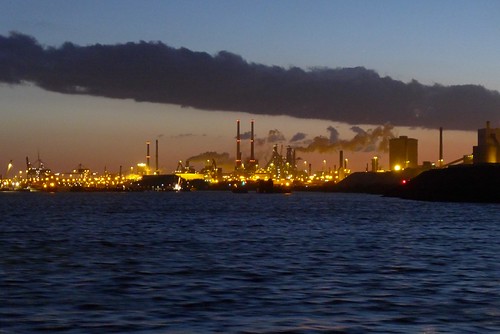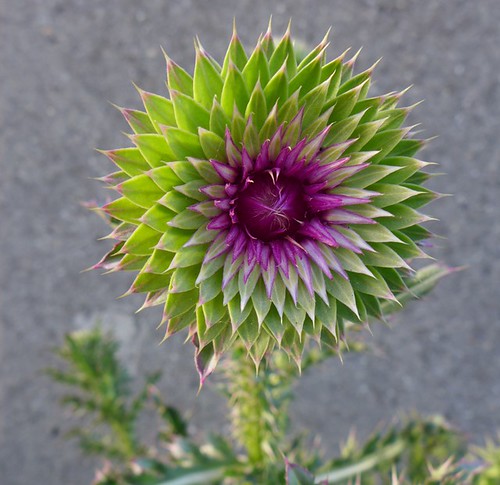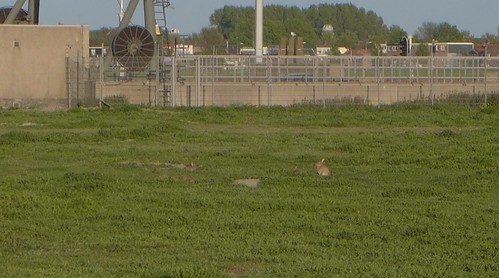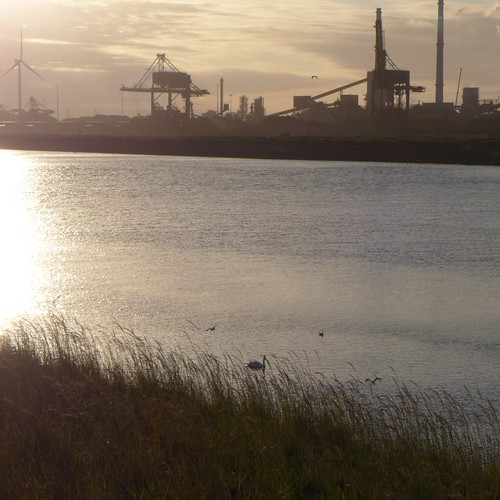This is a political website, so most readers will know about Austerity, in the sense of the current European malaise of public finances caused by socialization of private losses incurred in the recent banking crises. Well, that has botanical consequences, sort of.
Due to the austerity response to the crisis, public budgets at all levels are being squeezed, not only at national, even down to the municipal of my little hometown on the Dutch North Sea coast. Well, so the magistrate tries to save money. Well, they decided to cancel the usual mowing of the green roadbanks in places that arent all too much in the public eye. Normally, by now, we would have been already in the second mowing cycle. Not so now. Whats there, grows, and grows, as it sees fit. Well, and its my way to work and home! Since I go by bike, I can watch them at leisure.
The Daily Bucket is a regular series from the Backyard Science group. Here we talk about Mother Nature in all her glory, especially the parts that live nearby. So let us know (as close as you are comfortable) where you are and what's going on around you. What's the weather like? Seen any interesting plants, bugs or critters? Are there birds at your feeders? Deer, foxes or peahens in your yard? Seen any cool rocks or geological features? Post your observations and notes here. And photos. We like lots of photos. :)
it is a kind of special place, it´s my home:

It´s not exactly a nature reserve.

there in the middle ground is my way home from work. The sands are a motocross training ground now. Most sensible place - next to a steelpant built across the dunes, a whole locks away from the next village. The Dutch contingent to UN peacekeeping forces did situational training there some years back.
as a bike commuting way, now, it is nice enough. (This is at midday)

So I went home tuesday evening late, that way. It´s a treat to watch the flowers grow now that they arent cut down so often. For instance thistles.


Its genus cirsium I believe, but its hard for me to tell exactly which one. Its a bit thorny work to determine them completely. But in any case, as many people know, thistles give the grounds to an entire food web of little things, caterpillars, insects, mites and so on with their much desired energy rich flower heads and seeds. No different here, the thistles have hardly put up their heads and things already want to eat them.

see the little yellow arrow, there is a tiny dark speck: already a beetle clambers around trying to find a way into the flowerhead while the flower spins hairs to keep him out. And the whitish foam behind - already some insect has laid a tapestry of eggs (It´s called bird´s spew here but has nothing to do with birds), this flowerhead is doomed, the larvae will eat it. But thats the way of things.
There´s not only the big unmissable flowers like thistles. There´s a dozen little things hidden in the undergrowth of grass. They are just starting to flower:

trifolium campestre, the "creepy clover". The books say it loves lime rich grounds. Well ... the slag heaps just behind - they are rich in lime. this stretch of the roadside is constantly getting dust from there, lime dust. So this little flower grows here. Hundred meters down the lane .. beyond the slag heaps, not anymore.
Further down beyond the slag heaps, the path goes through the sands, and thats old dune land. And our dunes have their very own typical flora. And they are still there - a hundred years after this place was turned into industry, they still keep going. Uncut by mowers, they grow nice and high in the setting sun.

These are Boraginaceae flowers, sturdy and spiky, well defended summer flowers, especially this one. Seen with the light:

It´s echium vulgare, snake tongue or snake weed in local name, I think well known in English as viper´s bugloss: note the long "thing" coming out of the blue flowers? (I dont know the english names for the "things" the flowers have to reproduce with.) Forked like a snaketongue, thats what gave it the name. And all the hairs - they are not soft, they are sharp as glass needles. Not nice to the touch! This plant loves humans - for our pee. Which means nitrogen. So it grows where we tread, if its sandy.
But it was getting late now.

In that wild jungle of flowering grass and flowering flowers, the low sun still points out more dune specialists.

It´s anchusa officinalis, the oxen´s tongue - in english - common bugloss (aha). They should be blue but here (maybe due to the industry; its not a clean place) they turn all kinds offcolour. Even white. Or maybe that´s a natural variant- I dont know. Look at the little pelty white stubs: this are some more plant thingies - this plant has nectar deep below and closes it off nearly completely by these hard "shoes", and so only insects with long, flexible tongues (such as butterflies) can get at it. Or, that´s the plan. Some hardy insects such as bumblebees simply bite holes in the flower and get at it nonetheless. One does what one can.
Of course there were animals around too. Guess which :)

Thats the island between the main lock and the pumping station (dewatering Holland). a gravely and dry place since it has no water source but rain that sinks immediately away. So there´s just low green land, which is however not only grass.

That´s euphorbia esula, one of a weird group of plants, the Euphorbiaceae, who make fake flowers - see the broad yellowish blades - thats actually leaves mimicking flowers, and all the reproductive thingies are just there in plain exposre without petals and stuff. It likes the dry, coarser grained land, whose main source of fertility is the rabbit´s droppings. (well .. and countless dogs run there by humans!)
But as said it was getting late and it was time to say goodbye.

In fact there were the most elegant dive-fishing terns ... but thats way beyond my abilities to even see any details of let alone photograph. So I went home content with my flowers to get some sleep for the next day at the plant.
So .. what did you see out there?


